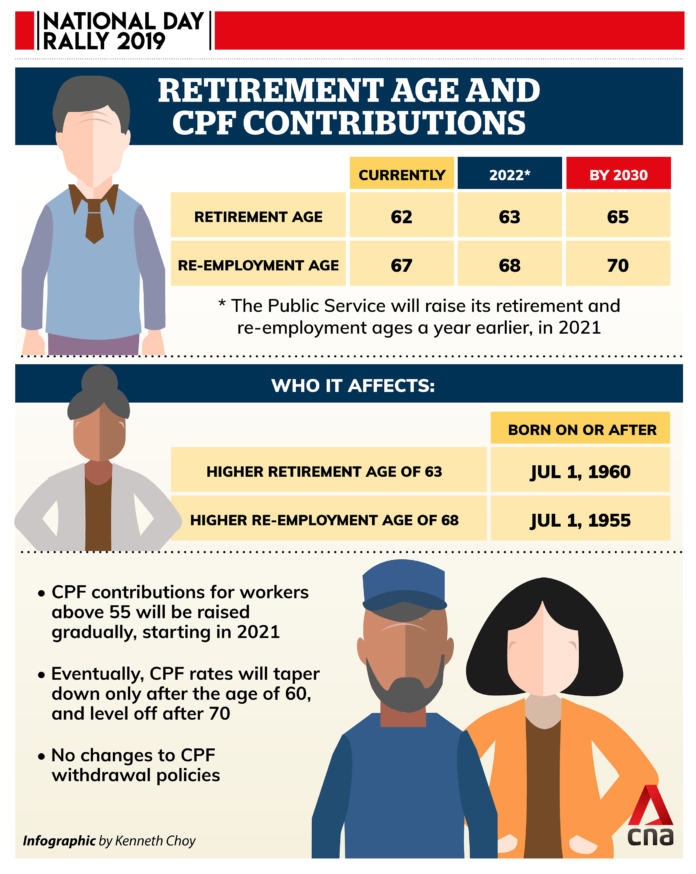SINGAPORE: Prime Minister Lee Hsien Loong unveiled plans to raise the retirement age and re-employment age by 2030, and to increase CPF contributions for older workers in the National Day Rally on Sunday (Aug 18).
He also announced measures to make education affordable – from pre-schoolers to students in tertiary institutions.
READ: Highlights: National Day Rally 2019
Mr Lee touched on current global issues as well, such as climate change and the US-China trade tensions, and how they affect Singapore.
Here are the main takeaways from his speech:
1. RETIREMENT AGE TO INCREASE TO 65 BY 2030
By 2030, the retirement age and re-employment age will be raised to 65 and 70 respectively.
The retirement age, which is currently 62, will go up to 63 in 2022. This will further be raised to 65 by 2030.
Meanwhile, the re-employment age, which is currently 67, will go up to 68 in 2022, before being raised further to 70 by 2030.
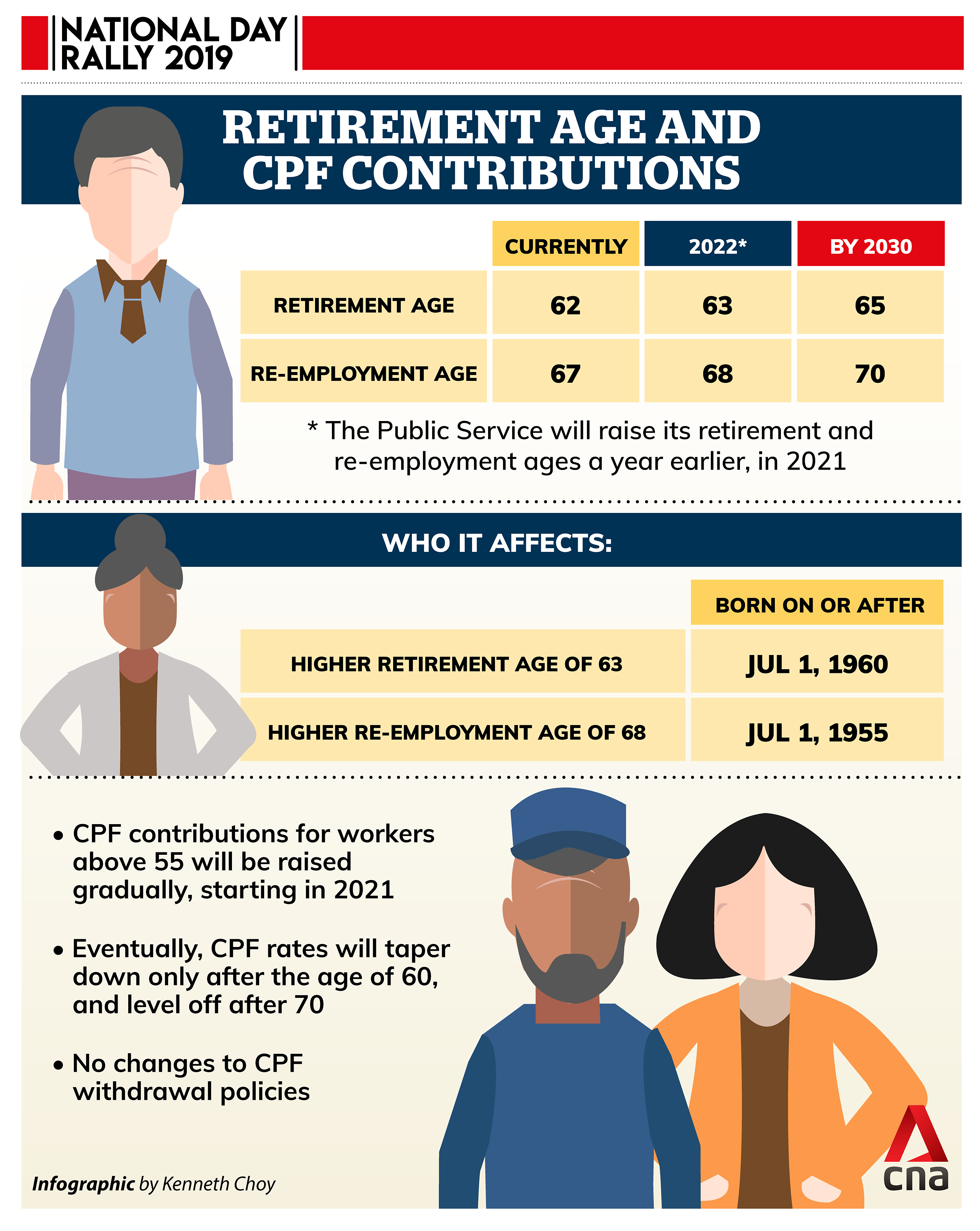
2. HIGHER CPF CONTRIBUTIONS
On a similar note, Mr Lee also announced that Central Provident Fund (CPF) contribution rates will be raised for workers above the age of 55.
The first adjustment will roll out in 2021, with the whole process taking about 10 years, depending on economic conditions.
READ: NDR 2019: New retirement, re-employment ages of 65 and 70 by 2030; higher CPF contributions for older workers
By the time the changes are completed, workers aged 60 and below will be able to “enjoy the full CPF rates”, Mr Lee said.
He also stressed that there will be no changes to CPF withdrawal policies or ages in light of such rumours earlier this year.
3. REDUCED UNIVERSITY, POLYTECHNIC FEES FOR LOWER-INCOME STUDENTS
On the education front, Mr Lee announced several measures aimed at helping lower-income students in tertiary-level institutions:
- Bursaries for university courses to increase from up to 50 per cent of fees, to up to 75 per cent
- Bursaries for polytechnic diploma programmes to increase from up to 80 per cent of fees, to up to 95 per cent
- Increased bursaries for students at the Institute of Technical Education (ITE), Nanyang Academy of Fine Arts and LASALLE College of the Arts
Students at Singapore Institute of Technology (SIT) and Singapore University of Social Sciences will also pay lower school fees from around the current S$8,000 to S$7,500.
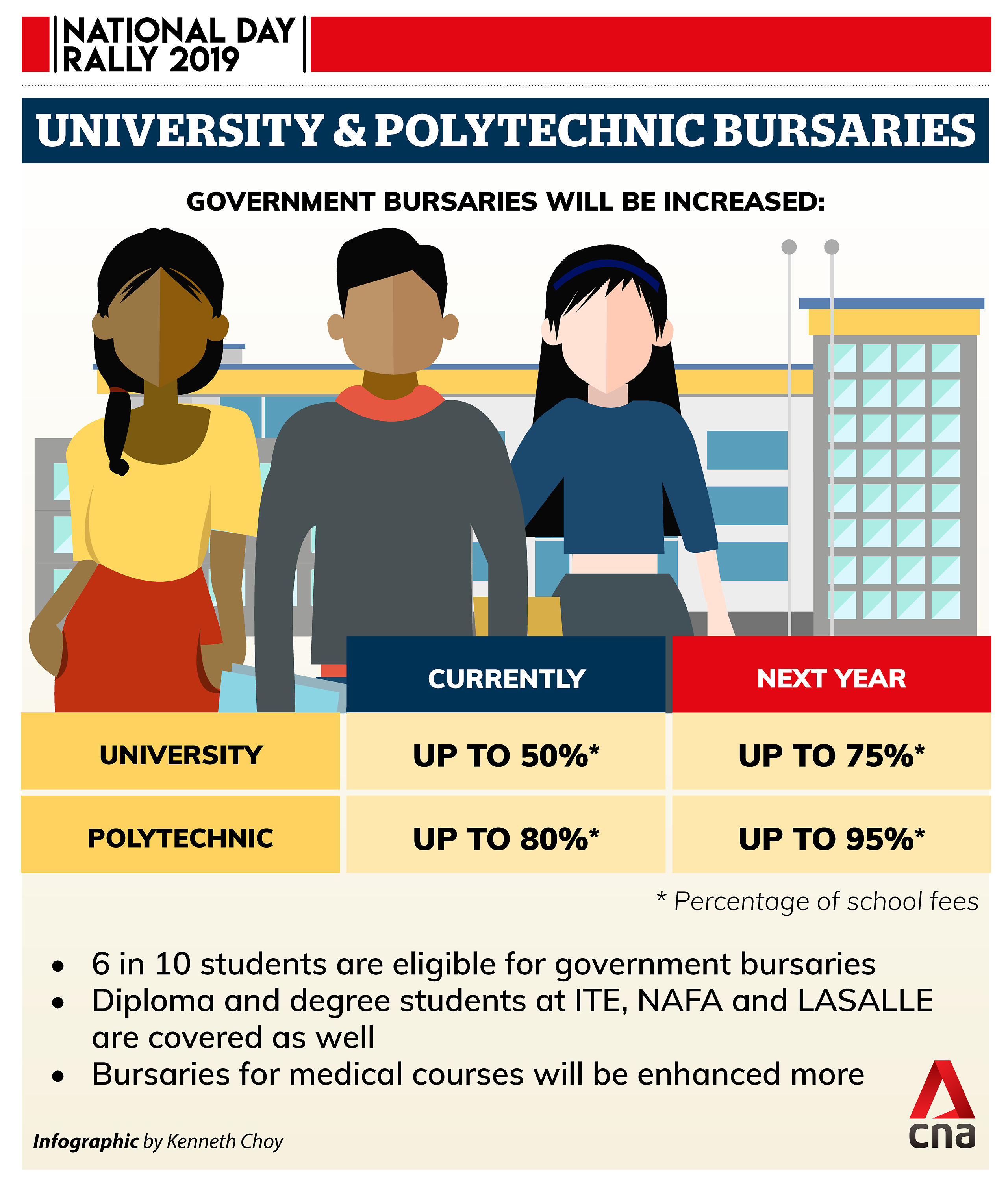
4. MORE PRE-SCHOOL SUBSIDIES
Singapore’s annual spending on early childhood education will more than double over the next few years.
The Government also will raise the income ceiling of households eligible for pre-school subsidies to S$12,000 per month, up from the current S$7,500.
This will result to an additional 30,000 more households in Singapore, who will qualify for preschool subsidies.
There are also plans to increase the percentage of Government-supported pre-schools from 50 per cent to 80 per cent eventually.
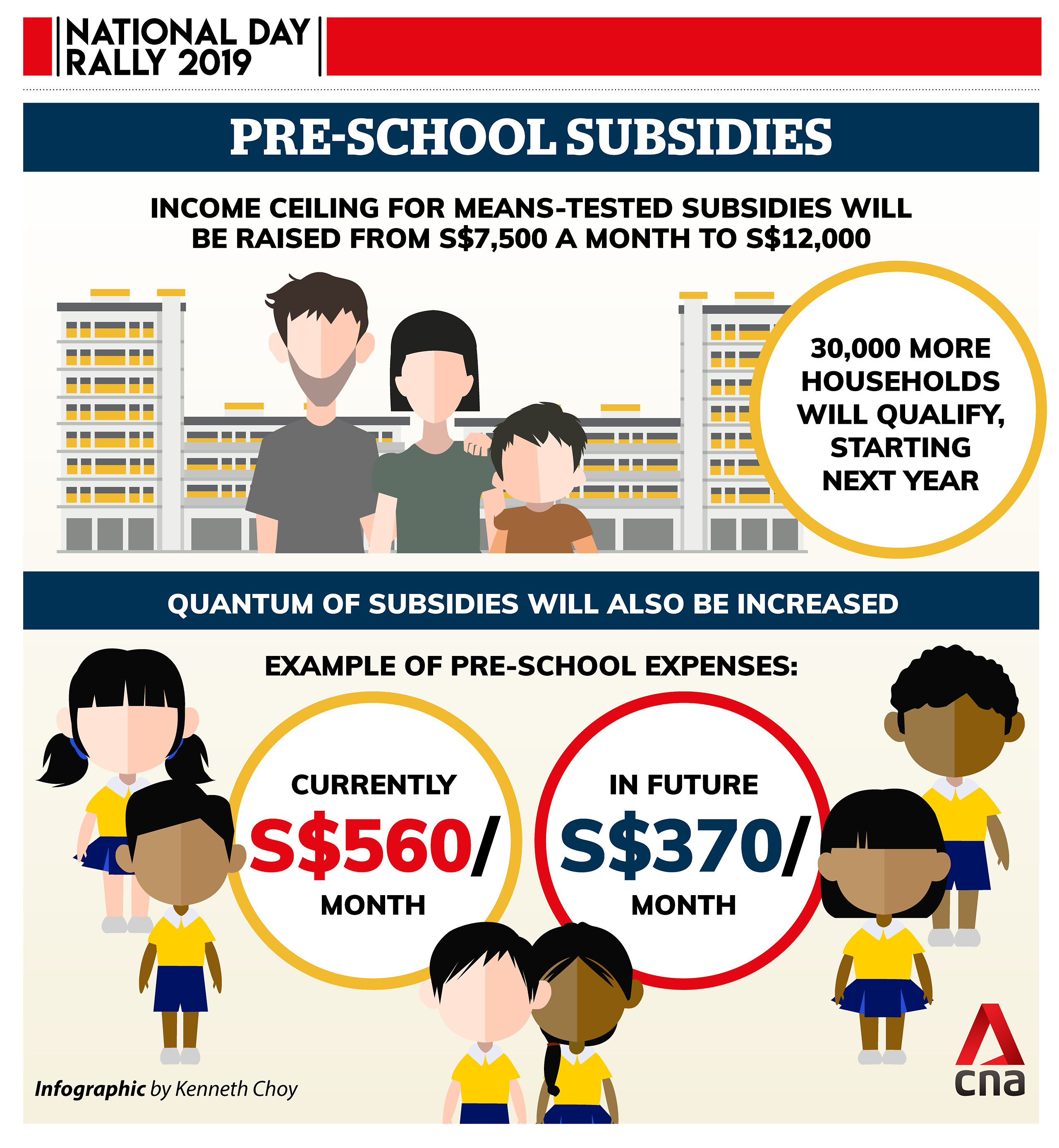
5. “GRAVE” CHALLENGE OF CLIMATE CHANGE
Singapore is already feeling the impact of climate change with hotter weather and heavier rainstorms, said Mr Lee.
“This will very likely worsen over the next few decades, within the lifetimes of many of us,” he added.
According to a Swiss study, by 2050, several cities in the world will experience “unprecedented” climate shifts, with Singapore being one of them.
It would cost low-lying Singapore about S$100 billion or more to protect itself from rising sea levels, said Mr Lee.
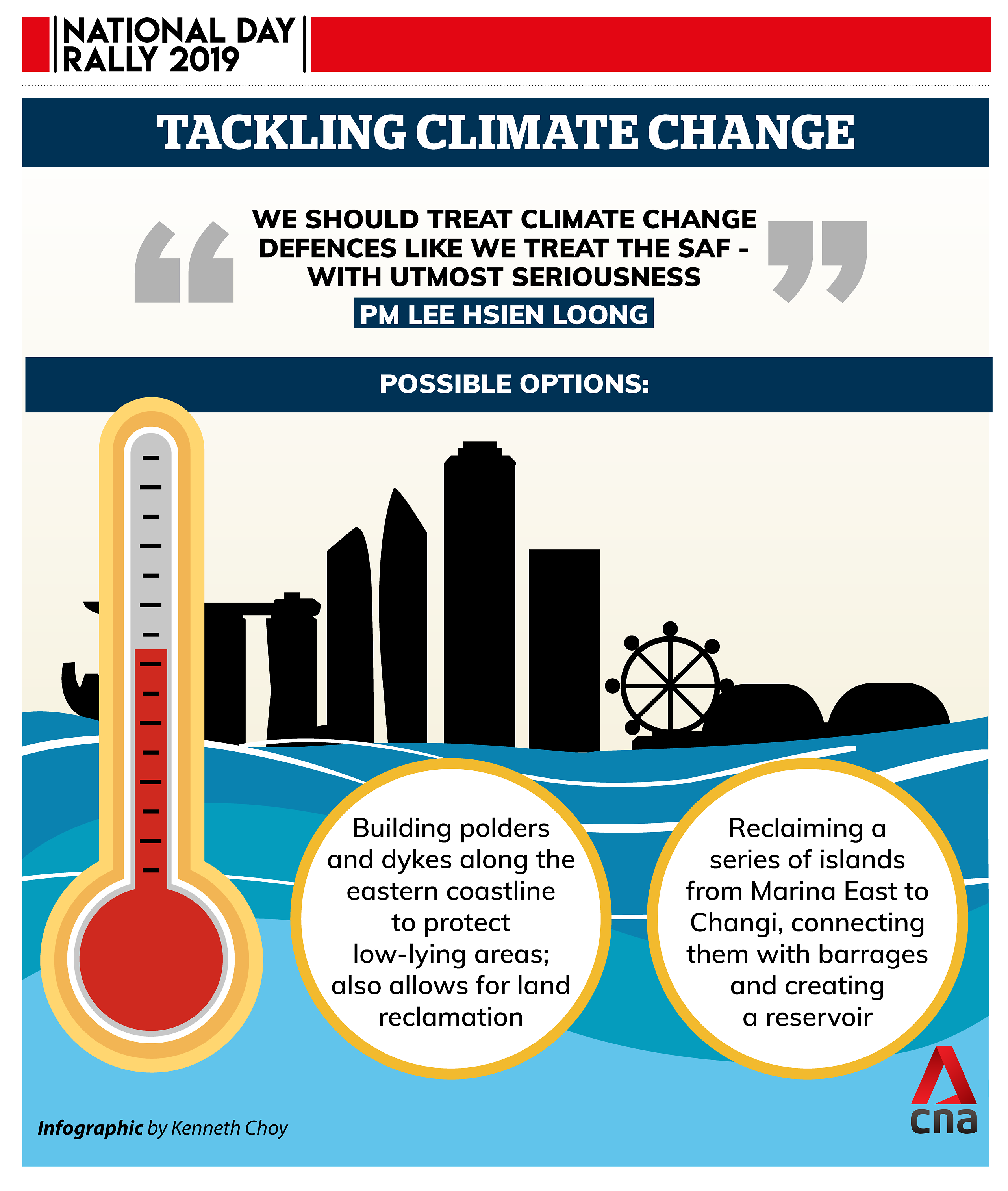
6. SO WHAT NEEDS TO BE DONE?
Mr Lee said that coastal defences would be needed to protect Singapore against rising sea levels, specifically pointing to critical areas such as East Coast and Jurong Island.
A plan for a second pump house on the opposite end of Marina Barrage is also in the works, while a small polder is being built at Pulau Tekong.
Mr Lee then highlighted that Singaporeans can do their part by reducing waste and being sustainable in their everyday habits.
“Although Singapore may not be able to stop climate change by ourselves, we can contribute solutions, and we must do our part.”
7. ANOTHER UNIVERSAL STUDIOS SINGAPORE?
In his speech, Mr Lee laid out his vision for the Greater Southern Waterfront (GSW). The area will be redeveloped as a new place to live, work and play.
READ: NDR 2019: New attractions, housing and office spaces to be developed in Greater Southern Waterfront
Twice the size of Punggol, the GSW will also have new attractions, similar to Universal Studios Singapore, as well as a “Downtown South” resort to be built by NTUC, likely on Pulau Brani.
Other than Pulau Brani, the Government also has plans to rejuvenate Sentosa and redevelop two decommissioned power stations in Pasir Panjang.
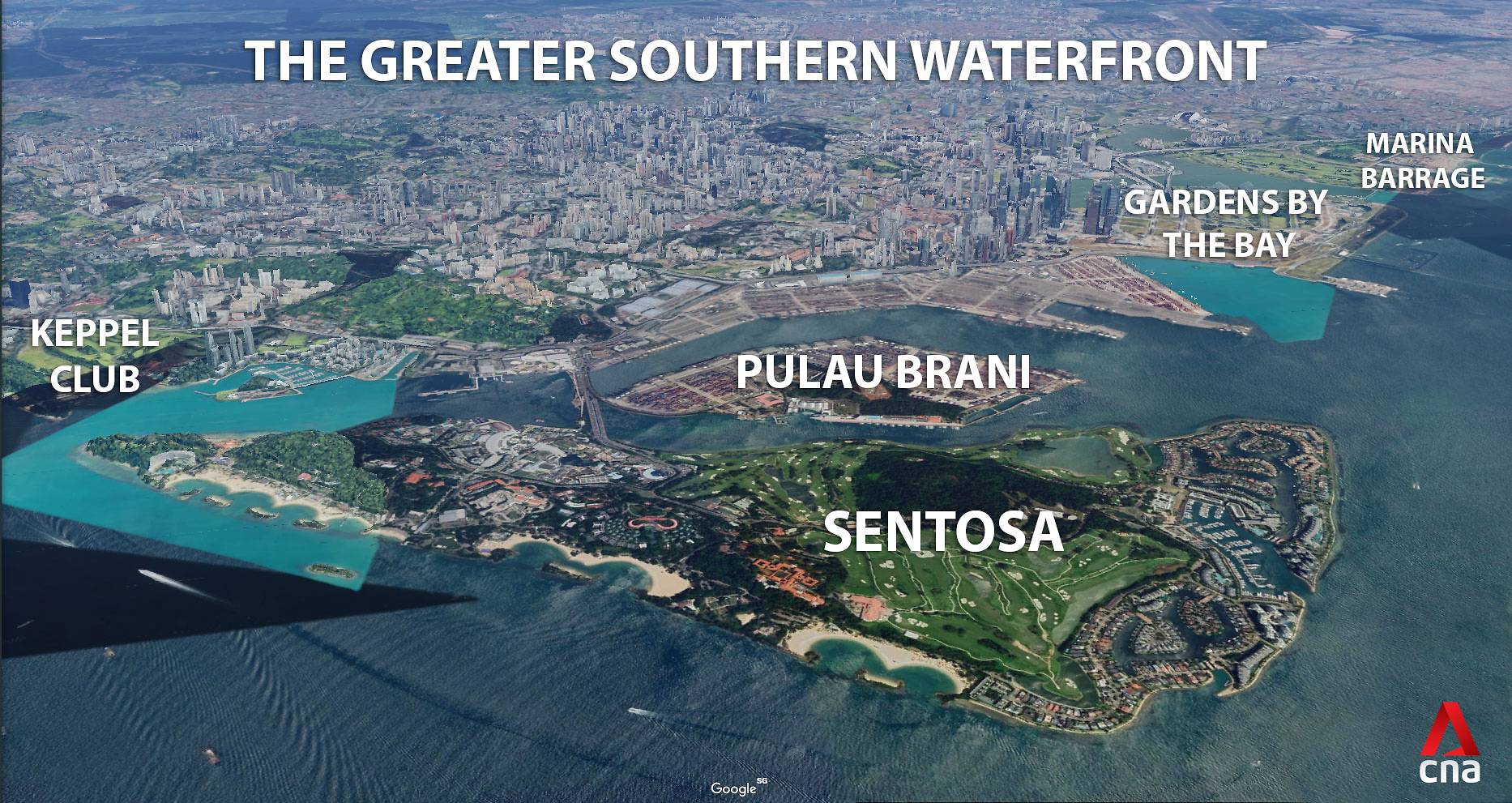
8. SINGAPORE APPROACH TO US-CHINA TENSIONS “PRINCIPLED”
Addressing the ongoing US-China trade dispute, Mr Lee said that while it had economic implications for Singapore, it did not warrant immediate stimulate measures.
In his Chinese speech, Mr Lee also pointed out that if the situation does get worse, the Government would “promptly respond with appropriate interventions to sustain the livelihoods of our workers”.
READ: NDR 2019: Singapore will be ‘principled’ in approach to China-US trade dispute; ready to help workers
With Singapore being the only other sovereign country besides China to have a majority ethnic Chinese population, this makes bilateral relations “unique”, said Mr Lee.
This is why Singapore must always be principled in its approach and not be swayed by emotions, he added.
9. MALAYS IN SINGAPORE HAVE “UNIQUE IDENTITY”
Malays in Singapore have developed a “unique identity” compared to their regional counterparts, said Mr Lee in his Malay rally speech.
READ: NDR 2019: Singapore Malays ‘distinct’ from others in region with inclusive religious practice, emphasis on education, PM Lee says
He noted that the Malay community practices religion “in a spirit of mutual respect, tolerance and inclusiveness” in Singapore’s multicultural society.
He also touched on how the community has been enhanced through its emphasis of education, citing the increase of Mendaki Awards recipients who graduated with first-class honours in university and the example of this year’s Malay President’s Scholar, Muhammad Dhafer Muhammad Faishal.
